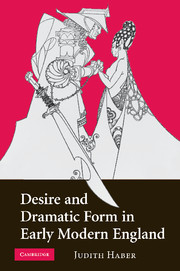Book contents
- Frontmatter
- Contents
- Acknowledgments
- Textual note
- Introduction: consummate play
- Part I “COME … AND PLAY”: CHRISTOPHER MARLOWE, BESIDE THE POINT
- 1 Genre, gender, and sexuality in “The Passionate Shepherd” and Tamburlaine
- 2 Submitting to history: Edward II
- 3 “True-loves blood”: narrative and desire in Hero and Leander
- 4 “Thus with a kiss”: a Shakespearean interlude
- Part II DESIRING WOMEN IN THE SEVENTEENTH CENTURY
- Afterword: for(e)play
- Notes
- List of Works cited
- Index
2 - Submitting to history: Edward II
Published online by Cambridge University Press: 02 July 2009
- Frontmatter
- Contents
- Acknowledgments
- Textual note
- Introduction: consummate play
- Part I “COME … AND PLAY”: CHRISTOPHER MARLOWE, BESIDE THE POINT
- 1 Genre, gender, and sexuality in “The Passionate Shepherd” and Tamburlaine
- 2 Submitting to history: Edward II
- 3 “True-loves blood”: narrative and desire in Hero and Leander
- 4 “Thus with a kiss”: a Shakespearean interlude
- Part II DESIRING WOMEN IN THE SEVENTEENTH CENTURY
- Afterword: for(e)play
- Notes
- List of Works cited
- Index
Summary
Marlowe's presentation of the brutal, iconographically “appropriate” murder of the king in Edward II has often posed a problem for critics. Traditionally, those who wished to avoid an orthodox interpretation of the play have appealed to some version of ambiguity, and this strategy survives in many more recent, historicized reconsiderations. In a discussion of closure and enclosure in Marlowe's plays, Marjorie Garber has provided a particularly cogent statement of this position, using Mortimer's “unpointed” Latin letter as support. The letter, designed to hide “the cause of Edward's death” (5.4.1–17), is unpunctuated (“unpointed”) and therefore ambiguous; it can mean either “Fear not to kill the king, ’tis good he die,” or “Kill not the king, ’tis good to fear the worst.” Garber comments: “The letter reflects the essential ambiguity of the play. Is it good to kill the king, either politically or morally? … The letter sums up the conflict in the center of the play, for both of its statements are true.” While I would agree that the letter is presented as centrally important, I believe that this formulation underestimates its force; the conflict between the two possible, positive interpretations of the letter – and of the play – is subsumed in, and ultimately negated by, a dialectic between socially constructed, causal meaning and the threat of no meaning at all, a dialectic (in the play's terms) between “point” and pointlessness.
- Type
- Chapter
- Information
- Desire and Dramatic Form in Early Modern England , pp. 27 - 38Publisher: Cambridge University PressPrint publication year: 2009



